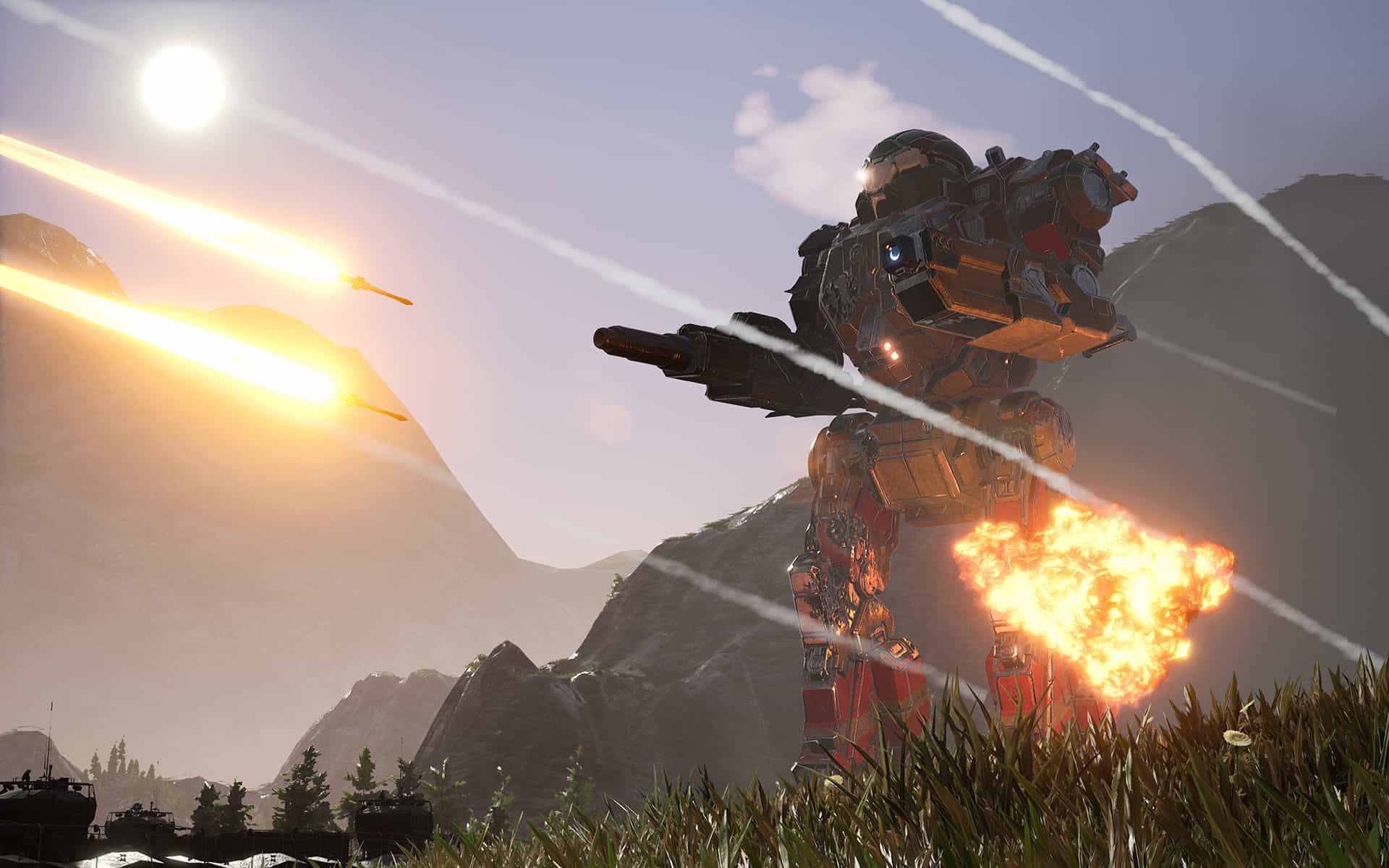
What is it? Giant robot combat simulator in a storied franchise.
Expect to pay $50/£40
Developer Piranha Games
Publisher In-house
Reviewed on Intel Core i5-3330, GeForce GTX 1070 Ti, 8GB RAM
Multiplayer? Co-op only.
Link Official site
MechWarrior 5: Mercenaries honors the 30-year MechWarrior legacy very closely: in mechanics, in controls, and even in soundtrack. Bombastic guitar riffs thunder over every combat encounter, lasers sizzle, PPCs crackle, and Gauss Rifles make that weird pew noise. Mechs stomp and break and explode spectacularly, leveling buildings around them. In short: MechWarrior is extremely back.
Not everything about the MW5 is a throwback. The overall aesthetic fits into the contemporary look of the BattleTech universe. The UI is clean, inspired by and of a piece with Harebrained Schemes’ interface for 2018’s BattleTech. Piranha’s modern ‘Mech designs are memorable updates to the dated ’80s designs. They stomp menacingly at each other across a pretty diverse set of battlefields that sits starkly opposed to the near-featureless plains of the MechWarrior past. It also brings in your friends in a co-op mode, both for campaign and one-off skirmishes, that is both stable and tactically rich. It runs pretty well—a first for me in the MechWarrior series—aside from one glitchy randomly-generated mission and some occasional chug on mission starts.
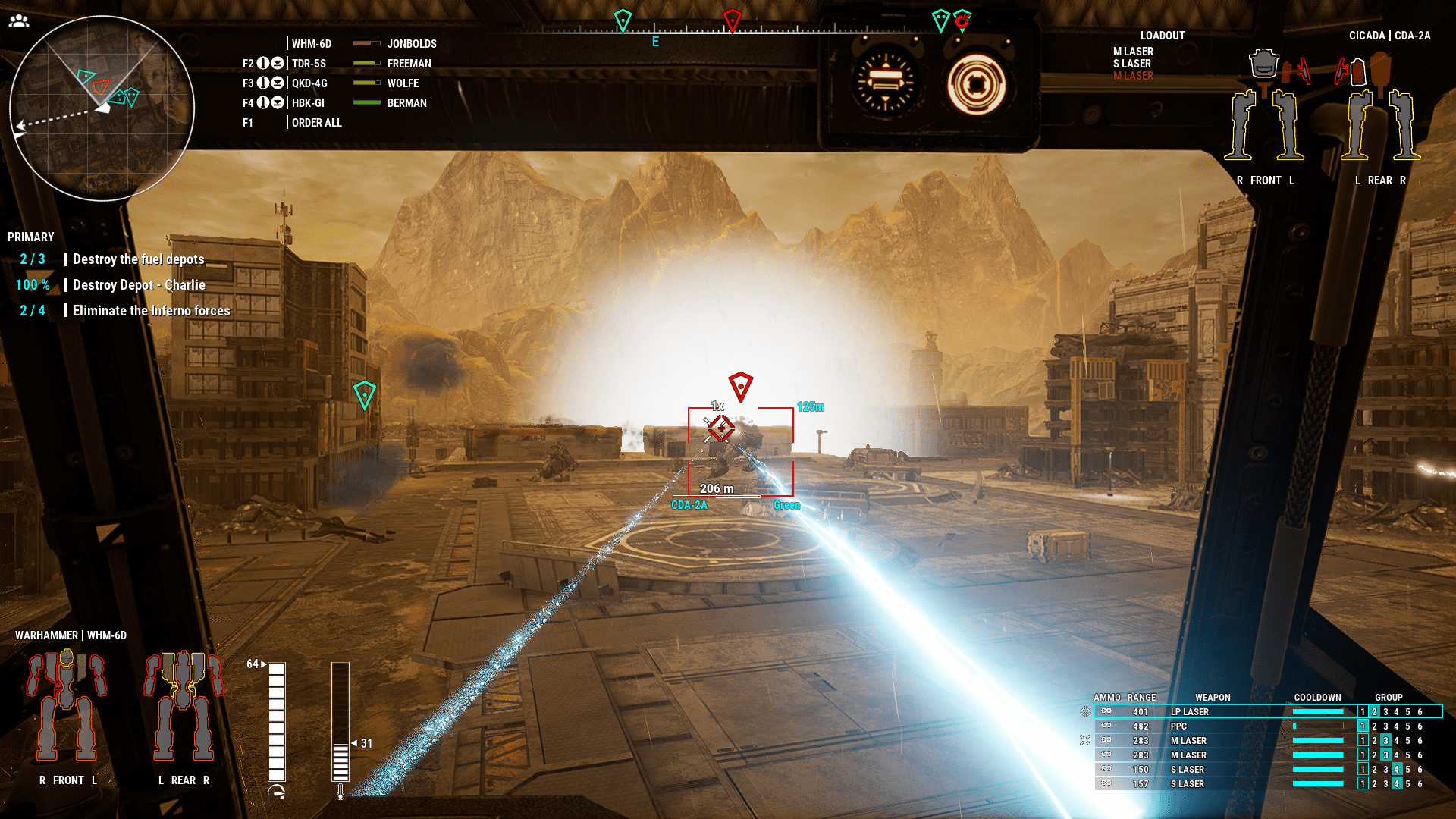
What sort of hardware do you need to run MechWarrior 5: Mercenaries, and what settings should you tweak? Our MechWarrior 5 performance and settings guide has the details.
The game is an interstellar sandbox about running a company of mercenary mech pilots and pursuing some casual revenge. It’s a campaign mode that really plays into the themes of the setting, ones of scarcity and technological regression, the so-called LosTech. It often forces you to make hard choices about how to re-arm a mech when you can’t find a replacement part—or simply sell the whole thing when it’ll be too time-consuming and expensive to repair.
Budgeting decisions can leave you strapped for cash, choosing between new mechs or top-tier guns for the mechs you have. The big space campaign map is really just a vehicle for a simple, tight, and effective loop: travel to a new conflict zone, pick a mission and ruin your mechs in combat, find a sidequest to accept, head to some industrial worlds to rearm and repair, then head back out to your new mission.
The feeling of dropping into those missions is superb. Your lance of mechs—yourself and up to three others, controlled by friends online or AI pilots—rotates into position, red lights strobing in the cavernous maintenance bay of your mercenary company’s Leopard DropShip. Your pilot’s hands move across the console to punch a boot-up sequence and grip controls. The doors in front of you crack open as the startup sequence completes and the iconic lines sound: REACTORS, ONLINE. SENSORS, ONLINE. WEAPONS, ONLINE. ALL SYSTEMS… NOMINAL.
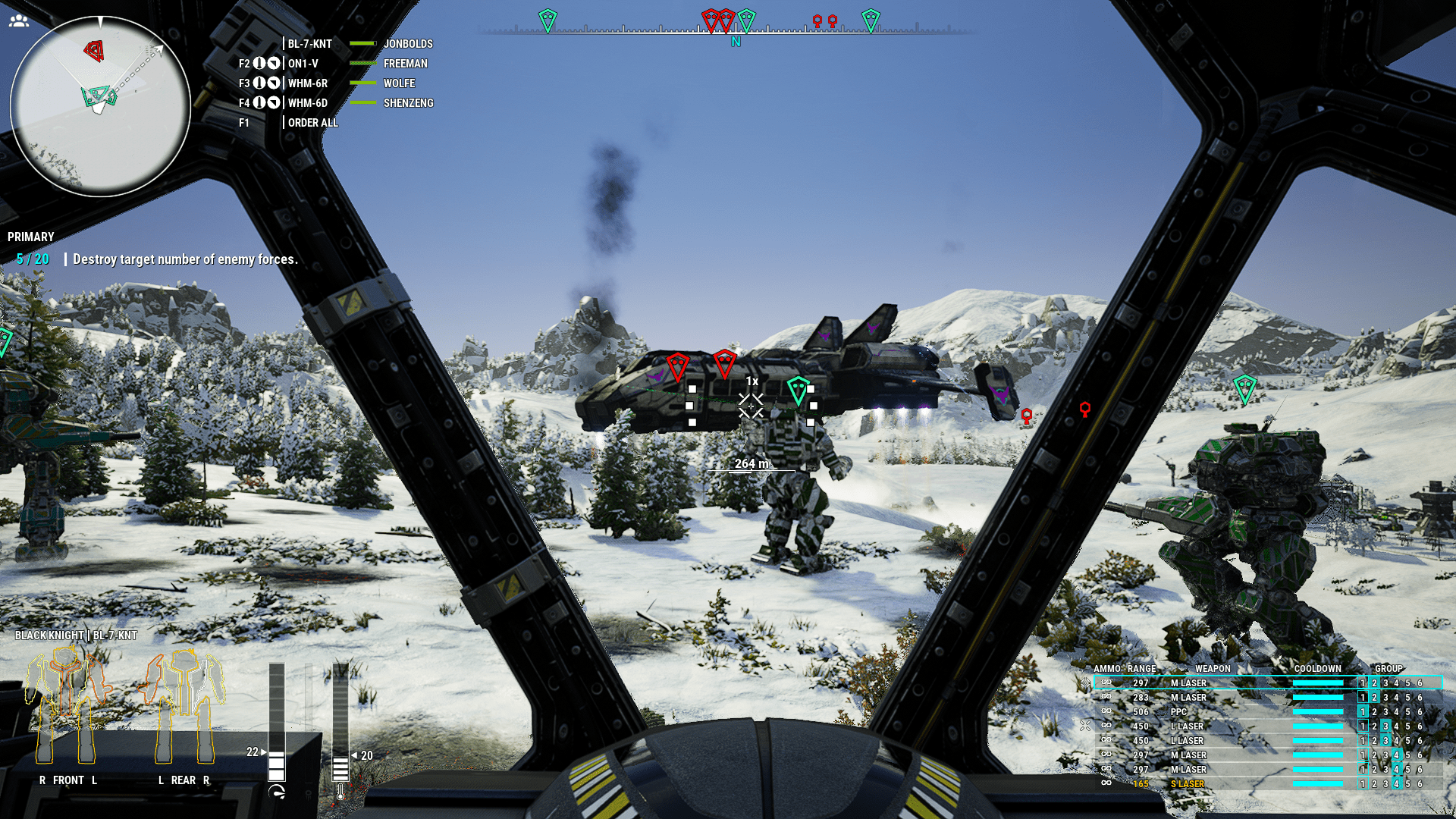
Your mech strides onto the battlefield—sometimes to a calm forest morning, others into raging streams of laser fire. The missions are chosen from only a few types, but they’re always different because each battlefield is procedurally generated and then sprinkled with objectives. Navigating cramped canyons on a Mars-like world is a very different feel from being utterly exposed on a rolling plain of wheat. There are also bespoke campaign missions of varying quality, from clumsy and linear to interestingly open-ended.
The mechs are a pleasure to handle, and the core experience of combat really takes advantage of the map as a centerpiece. Mechs stomp around, faster or slower as you throttle up and down—throttle and orientation control are a key part of the simulator-style play here. Twisting your torso to strafe targets and show strong armor to the enemy is key, as is knowing the layout of weapons on your mech—lasers situated high might shoot over a wall, while those slung on low arms will just explode the cover you were using.
Your mech strides onto the battlefield—sometimes to a calm forest morning, others into raging streams of laser fire.
Fights in MechWarrior 5 feel intensely physical as your mech slows to scale inclines or ploughs through a row of parked cars. Lasers rake across woods to follow a target and leave a trail of falling, burning trees in their wake. (A pleasure I spent a good five minutes repeating over and over when I discovered it.) Watching mechs smash into destructible terrain is great, for instance when a dodging mech shoulder checks a building and obliterates the facade.
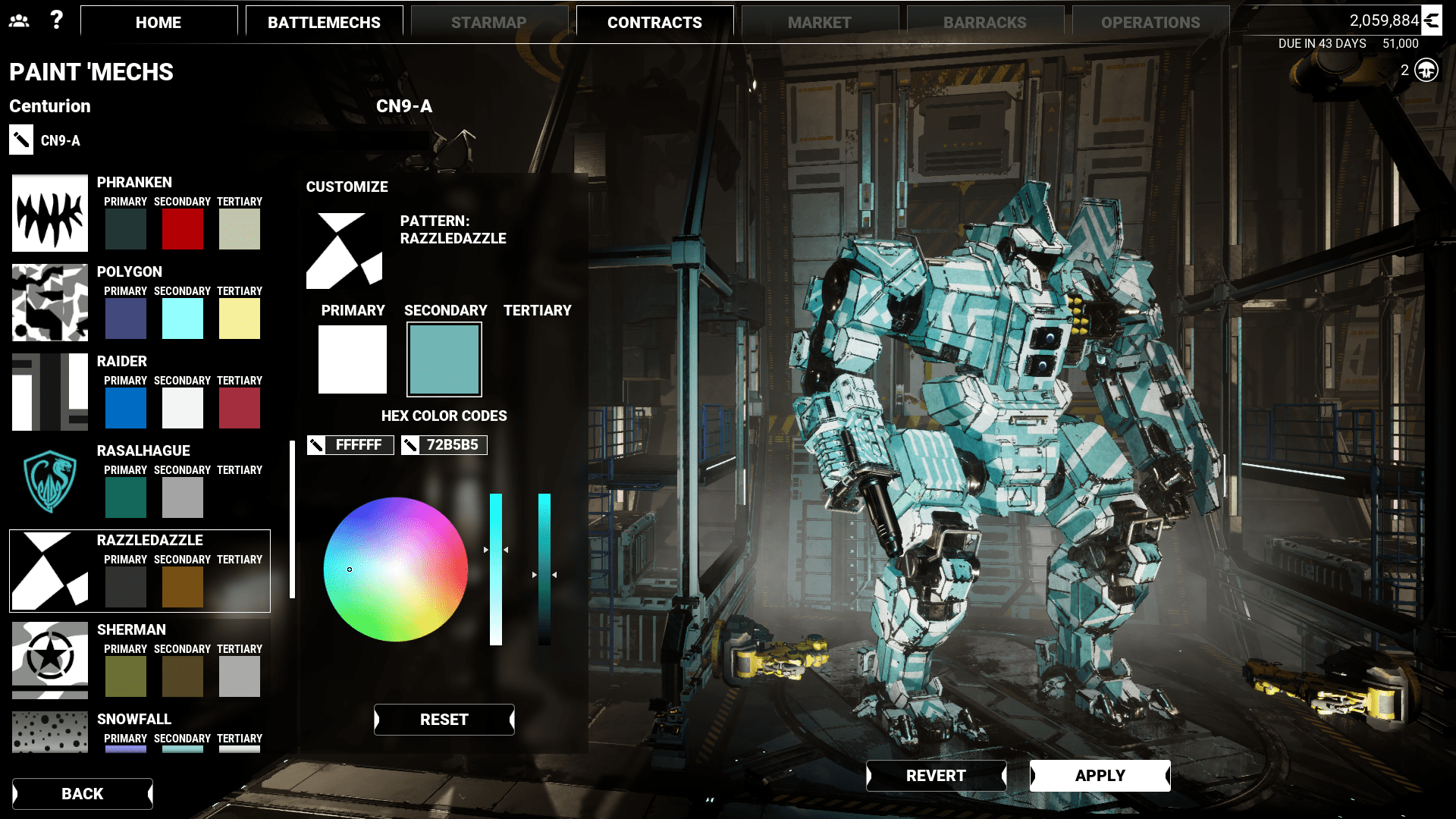
Of course, the smashing isn’t always on purpose. The AI of both your enemies and teammates is relatively functional but often comically inept at understanding the terrain. Allies will casually smash whatever you’re supposed to defend or launch missiles into cliffsides. Or, my personal favorite, be reduced to only long-range weapons and stubbornly continue circle-strafing an opponent inside their minimum range. Enemies can and will get stuck on terrain features, requiring you to pick through a whole city for one last, tiny tank before a mission can progress.
Raids quickly became my favorite missions. They’re lightning-fast battles that require you to destroy a handful of specific targets scattered across a map. Things like radar stations or warehouses, usually. The catch is that you’re only there to destroy those, then get out, and you’re there to do it against a huge number of defenders. Standing for a straight-up fight is likely to get you blown up, so I took delight in crafting specialty formations of fast, tough mechs geared to weave through cover and smash objectives before disappearing to other parts of the map. The strategy worked especially well in night fights where enemies’ long-range shots were hampered by night vision mode, or during weather events when banks of swirling dust storm could shield my movement. Customizing mechs is superbly fun, and a variety of weird techs and mech variants show up, with more being added as the in-universe timeline advances. Hunting down Rare Mech or Weapon icons on the campaign map is more fun than pursuing the main storyline.
The end of a mission is significantly less climactic. You don’t desperately return to your DropShip under the cover of its guns, you just fade to black at the exfiltration point. Actually, DropShips don’t shoot at all, aside from once during a cinematic in the tutorial. That’s a weird thing to miss since MechWarrior 4 so prominently and memorably featured the weapons on landed DropShips and Piranha’s own MechWarrior Online had them as well. There’s also just the one kind of DropShip—the Leopard—and the iconic spherical DropShips don’t make an appearance.

The DropShips aren’t the only bit of missing BattleTech lore that would make Mechwarrior 5 feel more complete. Infantry and aerospace fighter attacks are also absent—infantry conspicuously so since foot soldiers featured in a MW5 trailer. With melee combat featuring so gloriously—and so prominently—in the recent BattleTech tactics game, it’s sorely missing from MechWarrior 5. Mechs collide with a crash of screeching metal and… awkwardly grind against each other. You start with a Centurion, a mech with a prominent claw-and-shield arm for grabbing and slashing—but that arm just hangs limply. It’s a notable absence when every FPS for 15 years has included a token melee attack. (You can still run over smaller tanks and Death From Above attack by landing on others with jump jets. Both have suitably satisfying results.)
The characters are shallow and forgettable caricatures and the plot a paint-by-numbers revenge story.
Of course, none of those relatively small problems are so bad that they ruined MechWarrior 5 as a mech combat simulator. What could have is the writing. I cannot remember the last time I encountered a professional game with worse writing, dialogue, and narrative design than MechWarrior 5: Mercenaries. The characters are shallow and forgettable caricatures and the plot a paint-by-numbers revenge story. The few talented voice actors struggle with the barren dialogue they’re given. The stories of prior MechWarrior games may have been FMV ham festivals, but at least they had some heart, and BattleTech’s long history is rife with tales of star-crossed lovers and honorable space knights. You can’t watch the MechWarrior 2 betrayal cinematic, or the MechWarrior 4 intro, and not feel at least laughter. MechWarrior 5 made me feel absolutely nothing.
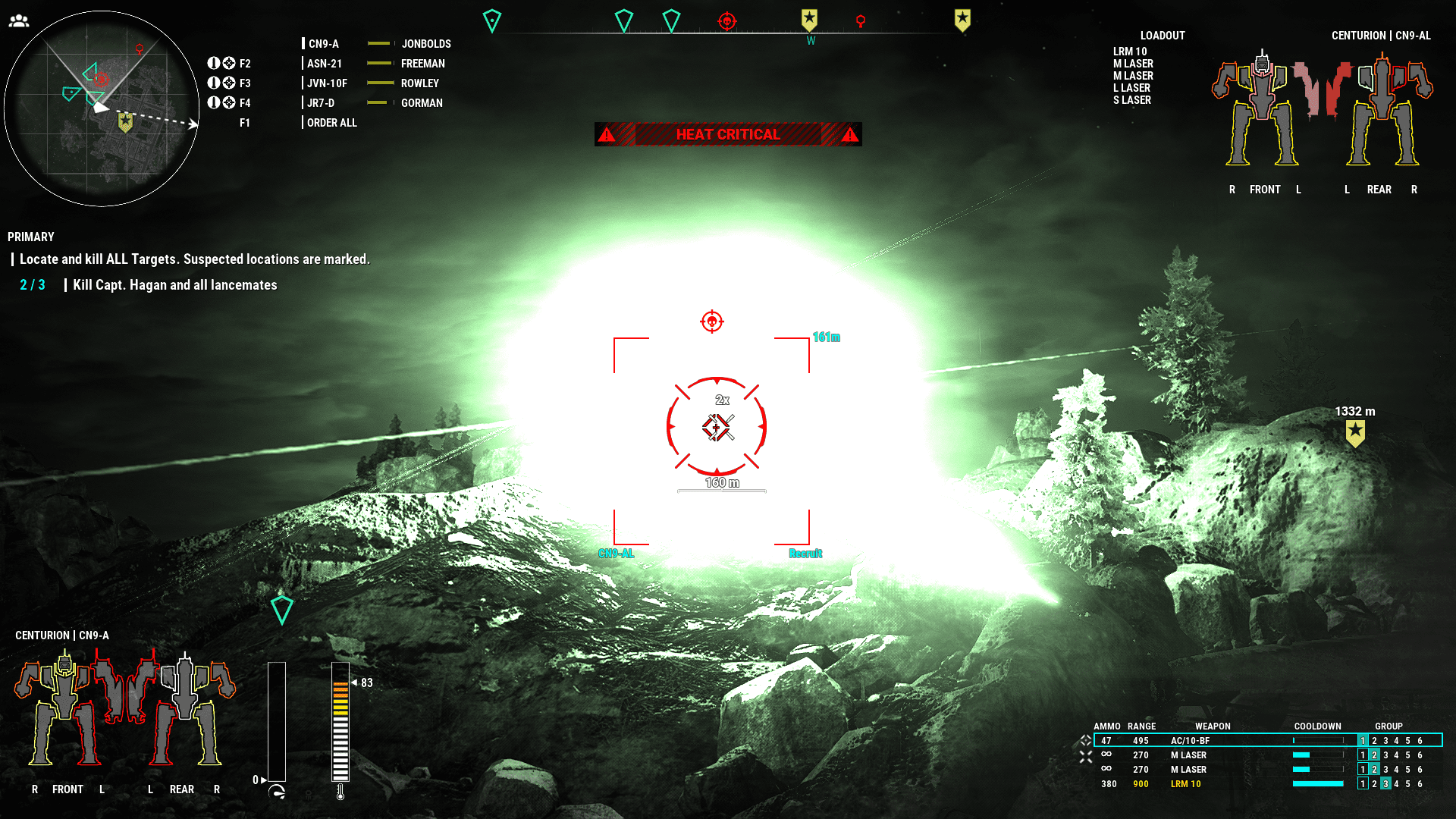
This is honestly kind of amazing, as the missions have you commit casual war crimes quite often. Sure, the civilian colony administrator is begging you to stop because there are women and children in the buildings you’re leveling, but at the end of the mission your coworkers just say something like, “haha wow that was a rough one we just did with the fusion flamethrowers on those schools and farms, let us collect our paychecks and never speak of this again.”
None of that is to even mention the bits of narrative that are entirely nonsensical. A mission chain will first task you with covering a VIP’s escape from one location, and then ask you to fight a desperate rearguard as the VIP’s ship is fueled to depart… except that supposedly immediate followup will be on a planet a month of travel away. This sort of mismatch between description and events is the rule, not the exception. Perhaps most glaringly, the text of item and mission descriptions is riddled with errors, misspellings, and grammatical mistakes.
But MechWarrior 5 is a game that will get a pass on its narrative woes because, I must concede, the narrative is so thin the gameplay completely trumps it. MW5 is unmistakably a game about being a sandbox mech jockey, and the stories are just a low-quality veneer over some superb robot combat. If you’re here for a mech smashing simulator, this is the best new mech smashing simulator around. Here’s hoping for more and better from a MechWarrior 6.
Read our review policy
MechWarrior 5 is a showcase of nostalgic, joyful mech combat.

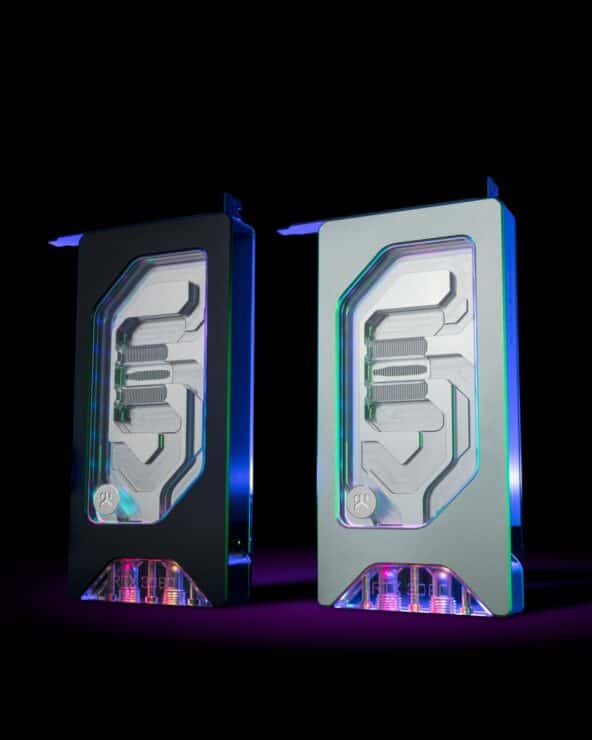
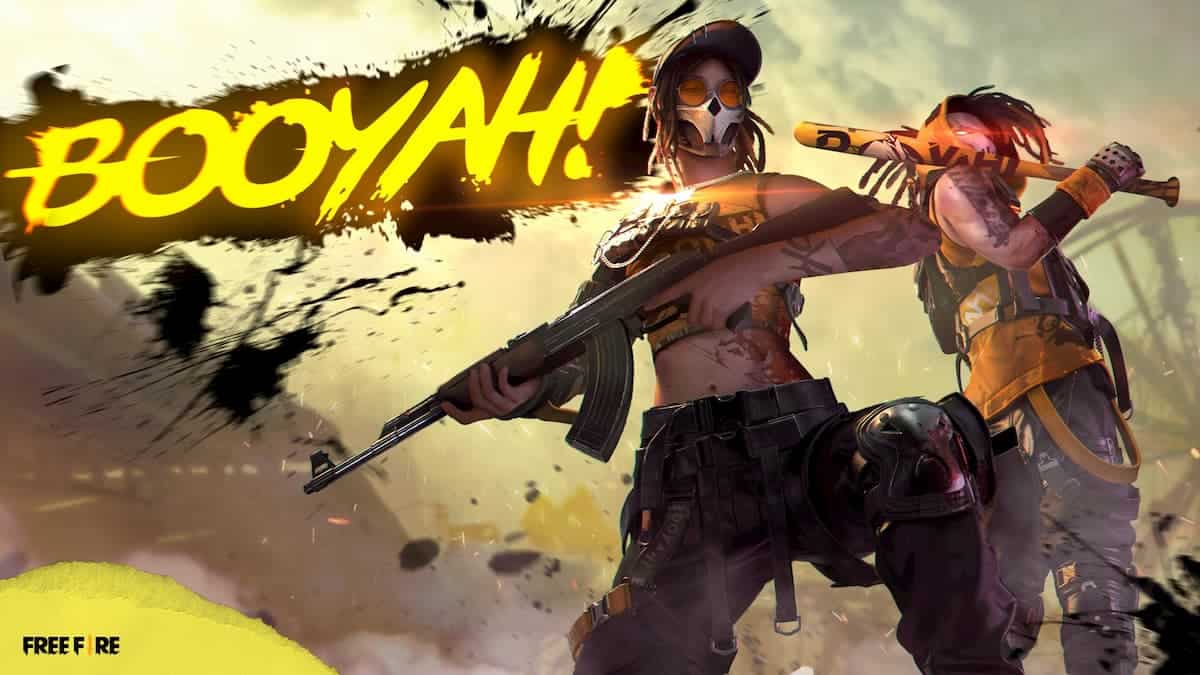
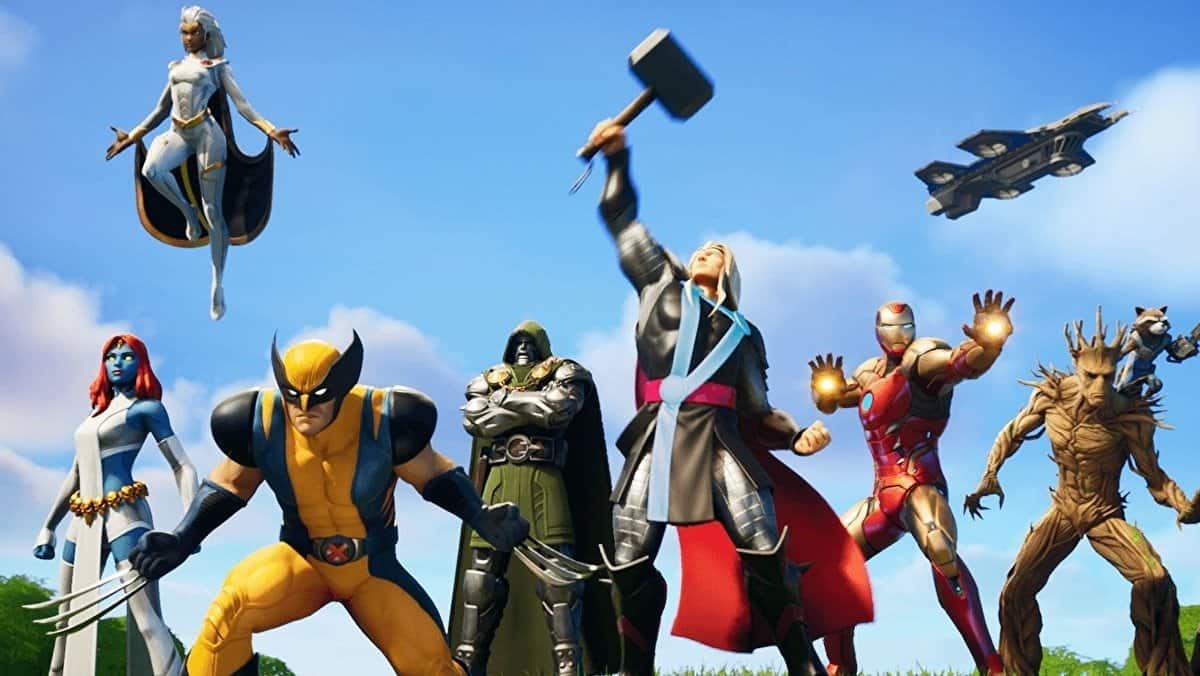
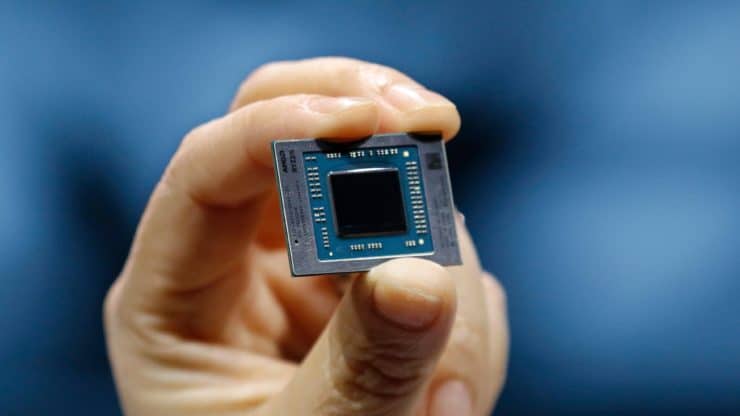
More Stories
Firefighting Simulator – The Squad review — Through the fire and the shame
Maid of Sker review — Death in the slow lane
PHOGS! review – It’s a dog-help-dog world out there